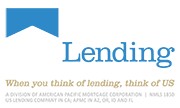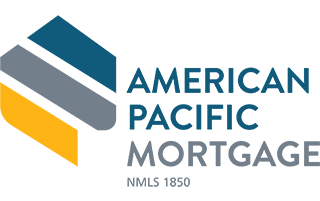Homestyle Loan vs 203k: Which Loan Suits Your Home Improvement Needs?
 When you’re looking for a home to buy, there’s a good chance that many of the houses that you’ll see need repair work or are missing features that you want. If the house is otherwise perfect for your needs, you may want to consider buying it and paying for those repairs or renovations yourself. If you do this, you will need additional funds on top of the money that you’ll need to purchase the house. Investing in such home improvements can improve the value of the house and build equity in the new home right up front. To get the money you need to both buy a home and to make the desired home improvements, consider these two options: the FHA 230K loan and the homestyle loan.
When you’re looking for a home to buy, there’s a good chance that many of the houses that you’ll see need repair work or are missing features that you want. If the house is otherwise perfect for your needs, you may want to consider buying it and paying for those repairs or renovations yourself. If you do this, you will need additional funds on top of the money that you’ll need to purchase the house. Investing in such home improvements can improve the value of the house and build equity in the new home right up front. To get the money you need to both buy a home and to make the desired home improvements, consider these two options: the FHA 230K loan and the homestyle loan.
Quick Overview of the FHA 203k
The FHA 203k loan is backed by the government, making it easier for homebuyers to qualify through approved lenders. It’s also why FHA 203k loans are available with lower interest rates compared to other conventional loans. These loans are meant to make it easier for borrowers to purchase fixer-uppers, which tend to cost less than comparable homes on the market because of their need for repairs or renovations. FHA 203k loans are available for both purchasing new homes or refinancing current homes.
Quick Overview of the Homestyle Loan
Homestyle loans are long-term renovation loans backed by Fannie Mae. In addition to being available to borrowers who are purchasing or refinancing homes that need improvements, they are also available to investors. Upon receiving the loan, renovations and repairs must be started within 30 days and must be completed within six months.
The Difference Between a Homestyle Loan and 203k
Even though there are a lot of similarities between the two loans, especially in that they were both designed to roll home loans and home improvement loans into one large loan, they have a number of differences. The main differences between a homestyle loan and an FHA 203k loan follow:
Type of Loan Offered
Both homestyle loans and FHA 203k loans can be used by homebuyers to buy and renovate new homes as well as by homeowners to refinance and renovate their existing homes. The big difference is that FHA 203k loans can only be used on primary residences, while homestyle loans can also be used on secondary homes or investment properties.
Limitations to Be Aware Of
There are limitations to what type of home improvements you can make using your FHA 203k loan. The only types of improvements that an FHA 203k loan can cover include structural repairs, renovations, landscaping, garage addition, energy conservation improvements, new appliances, new roofing, and non-structural repairs (like painting). Specific examples of some of the improvements you can make using the loan include plumbing repairs, flooring replacement, new siding installation, HVAC upgrades, bathroom and kitchen remodels, deck and patio installation, and home additions. Luxury improvements, such as installing a pool or a basketball court on your property, are not covered by FHA 203k loans.
Homestyle loans have fewer limitations on how you can use the money. As long as the home improvements add value to the property and are permanent, they qualify. This means you can use homestyle loans for luxury improvements.
Their Mortgage Insurance and How They Differ
Both loans require mortgage insurance. However, the terms and flexibility that come with a homestyle loan are comparatively better than those of an FHA 203k loan. With FHA 203k loans, you’ll have to pay a flat percentage every month. Your credit score and LTV have no impact on the cost of your mortgage insurance, nor will you be able to cancel it once you’ve built a certain amount of equity in your home.
With the homestyle loan, you won’t have to pay for mortgage insurance upfront. Additionally, the amount you’ll have to pay on mortgage insurance every month will be based on your credit score and LTV. The lower your LTV and the higher your credit score, the less you’ll have to pay for mortgage insurance. Once your LTV is less than 80 percent of your home’s value, you’ll also be able to cancel your mortgage insurance.
Maximum Renovation Amount You Can Get
As long as your mortgage amount is within the county guidelines for FHA loans, there is no maximum renovation amount that you can get. However, with homestyle loans, you can’t get more than 50 percent of the as-completed value of the house you’re purchasing or refinancing.
Your Credit Score Credentials
One of the perks of a government-backed loan is that the credit score requirements are more relaxed. You could potentially qualify for an FHA 203k loan with a credit score as low as 580, although most FHA-approved lenders won’t accept anything below 620. Homestyle loans require a minimum credit score of 620. Just keep in mind that there are many other factors taken into consideration, including your current employment, income, and debt-to-income ratio.
Difference of Down Payment Needed
Because the FHA 203k loan is a federally backed loan while the homestyle loan is a conventional loan, the down payment requirements will be less for the FHA 203k loan. The minimum down payment for an FHA 203k loan is 3.5 percent of the total cost (which includes both the cost of the home and the cost of the renovations).
For homestyle loans, the down payment requirements vary a little based on certain factors. For most primary and secondary homes (such as vacation homes), the minimum down payment is 10 percent–although in some cases, it can be as little as 5 percent with management approval. For investment properties, the minimum down payment is 20 percent.
Closing Costs
The closing costs for a homestyle loan tends to be a bit lower than those of an FHA 203k loan; however, closing costs on an FHA 203k loan can be paid with a seller contribution to help offset those costs. Closing costs on a homestyle loan fall between 2.5 and 5 percent.
Considerations to Make for Your Renovation
FHA 203k loans are limited to primary residences while homestyle loans can be used on vacation homes and investment properties. But there are also some limitations to the types of properties you can purchase and renovate using either loan.
What Type of Property Do You Have?
The type of property you own or are planning to buy has an impact on your eligibility. If you’re attempting to take out an FHA 203k loan, then the only types of properties that are eligible for the loan include single-family dwellings, one to four-unit townhouses and detached homes, one to four-building condos (which are limited to interior improvements only), off-site houses and modular units that can be moved to a property, and conversions of single units into two to four-unit dwellings.
Homestyle loans can be used on single-family homes, up to four-unit multi-family homes, condos, and PUDs (planned unit development); however, they cannot be used towards manufactured homes.
Deciding Between These Two Options
Many factors go into buying or refinancing a home with the added goal of investing in home improvements. First, if you’re looking to buy or renovate a secondary home or investment property, or you want to add luxury features, then you won’t be eligible for an FHA 203k loan, making the homestyle loan the obvious choice. However, if you’re considering buying or refinancing a primary residence and want to invest in non-luxury home improvements that repair or add value to the property, consider the following before deciding which loan to apply for:
Short-Term Plans
An FHA 203k loan might seem more limiting in the sense that you have to live in the home for at least 12 months to be eligible. However, once those 12 months are up, you can flip the house for a profit or rent it out if you’ve increased its value with home improvements. In fact, FHA 203k loans are assumable by the next buyer, which can be a big selling point.
Long Term Plans
Homestyle loans are only available in 15 and 30-year terms, making them less attractive to investors who may want to buy fixer-uppers and flip them within short periods of time. However, if you’re an investor wanting to buy-and-hold, homestyle loans can be quite attractive.
Current Situation
Much depends on your current financial situation as well. If you have a lower credit score and just want to buy or refinance your current home and to renovate it, then an FHA 203k loan may be your best option, especially if you don’t have a lot of reserve funds to pay for a large down payment. However, if you can afford a larger down payment and your credit is in good shape, a homestyle loan is probably the better option. This is because your good credit will help to lower your interest rate, whereas your credit will have no impact on your interest rate with an FHA 203k loan. Another bonus is that by making a larger down payment, you can avoid or cancel your mortgage insurance on a homestyle loan.
The views, articles, postings, and other information listed on this website are personal and do not necessarily represent the opinion or the position of American Pacific Mortgage Corporation or US Lending Company.
* For loan examples and more information visit our disclosure page at https://www.uslendingcompany.com/disclosures/





